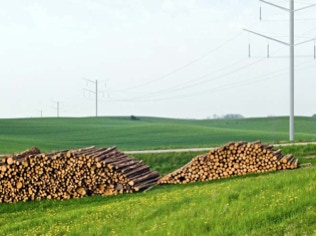
Over half a century of

Pylon Development



Pylon development: what can we learn from
other countries?
Half a century of pylon development. Spot the difference. The figure shows “new” designs since the 1980’s
These include:-
Suspension pylons: These support the conductor on straight stretches of line.
Conductors: are suspended by a vertical insulator string.
Deviation pylons: These occur at points where the route changes direction.
Conductors: are attached by horizontal insulator strings.
Terminal Pylons: These pylons are of greater bulk in order to ensure stability. They occur at the end of overhead lines where they connect with substations or underground cables.
Overhead power line design and construction has seen steady refinement in the last 40 to 50 years without yielding any significant breakthroughs. Likewise, the
materials used in overhead line construction, with the exception of line insulation, have seen incremental, as opposed to fundamental, change. The most substantial change in the environment surrounding overhead transmission lines is the permitting process. The demands and protests from the public has caused considerably delay for those planning such projects and adds considerably to the total cost of the project.
In the distant past, the need for a line was established within the planning offices of a utility. Proposed routing usually consisted of drawing a fairly straight line from Point A to Point B. Regulatory commissions, which were also interested in maintaining low costs, generally went along with the proposed need and routing unless there were considerations not met by the utility, and land owners thought it their duty to allow the development for the greater good of the country. It is worth noting that the government has now setup the Infrastructure Planning
Commission http://infrastructure.independent.gov.uk/ whose task it is to streamline the planning process, and will almost certainly be involved in this project.
Having said this, we are now in a new age and whilst we all accept the need for the strengthening of the grid we need to apply 21st century solutions to the problem. National grid have said proudly in the questions and answers section of their website that the new set of pylons will be the ‘modern day’ equivalent of those constructed in the 1960’s : approximately the same height and spacing
but slightly slimmer in appearance!















NG want to replace the pylons on the left with another row of huge ones as seen on the right









The Danish two-story Eagle-mast is approx. 45 meters high and 30 meters wide – about the same height as the national grid design but 6 - 8 meters wider, These pylons will take 2 x 400Kv circuits.
In contrast to the National Grid, Energinet – the Danish grid company which like the rest of Europe has similar expansion issues with their grid system puts a great deal of effort into reducing the environmental impact of the overhead cables
they install. They are actively working towards undergrounding power cables where possible
and if not go out to wide consultation to minimise the impact of the overhead
cables.
In the consultation process for upgrading a 400Kv line between Kassø and Tjele the Danes have come up with the new Eagle Mast. The Danish policy is to put
new installations underground however this link is currently too long at 178km (96 miles) and for technological reasons has to go over ground.
Out of the current options National Grid are basically planning to add another row of the 400Kv pylons on the existing route with the possible removal of the existing 132Kv line operated by EDF (the EDF grid is currently up for sale). So under their plans it means two rows of the steel lattice monstrosities across the
countryside.
